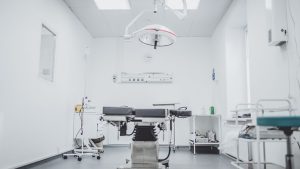
Surgical smoke is a gaseous by-product produced by energy-generating surgical devices. If not properly evacuated, these gasses may be harmful to health over time.
Following in the footsteps of Rhode Island, Colorado house bill (HB19-1041) was signed into law on March 28, 2019 by Governor Jared Polis. The bill requires every hospital with surgical services and every ambulatory surgical center to adopt and implement a policy that prevents human exposure to surgical smoke.
And this must be implemented on or before May 1, 2021.
To do this, hospital staff must use a surgical smoke evacuation system during any planned surgical procedure that is likely to generate surgical smoke.
Why is this important?
We have known for years that electrocautery (surgical) smoke contains various carcinogens and may pose unknown cancer risks for the nearly one million surgical staff around the world.[1] Surgical smoke, consisting of chemical gases and particles with various sizes, raises potential health concerns to surgical personnel in the long-term medical practice. In surgical smoke, contaminants such as hydrocarbons, phenols, nitriles, fatty acids, acrylonitrile, and carbon monoxide and viable cellular elements pose potential acute or long-term health hazards to the surgical staff.[2]
Is your system working?
But how do you know if your hospital’s surgical smoke evacuation system is working effectively to protect your healthcare workers? Ultrafine discrete particle counters have been used in detecting concentrations of ultrafine particles during surgeries.[3] Other real-time particle measuring devices (e.g., electrical low-pressure impactors) have been used to characterize the particles of surgical smoke in sizes less than 0.02 micron.[4]
Although this is one way of testing the air and verifying the efficacy of a smoke evacuation system, particle counting is only one parameter in testing surgical smoke. Particle counting by itself cannot characterize what the particles are. For example, these particles could be:
- CO
- HCN
- H2S
- α-pinene
- ethanol
- benzene
- dichlorodifluoromethane
- methylene chloride
- n-hexane
- acrylonitrile
- bacteria
- viruses
Luckily, a portable Fourier Transform Infrared Spectrometer (FTIR) can accurately perform real-time quantitative airborne chemical analysis of surgical smoke during surgery.[5, 6]
Higgins and Associates, LLC has the expertise to assist our healthcare clients with air sampling and verification needs.
Contact Art Goguen at (303) 708-9846 for more information.



